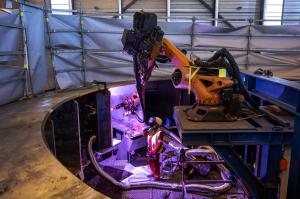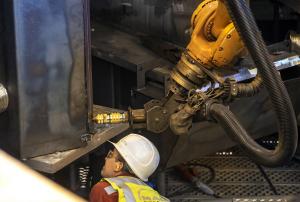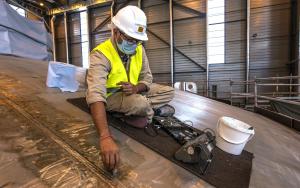Like a fire-breathing dragon
With the precision of a surgical tool, the plasma jet cuts through the thickness of the steel plate. As sparks fly, the large circular opening at the centre of the cryostat lid is bathed in pinkish-mauve light—the colour of the ultra hot (30 000 °C) hydrogen-nitrogen-argon plasma. Towering above the operator, the computer-controlled 10-tonne robot slowly moves its cutting head up one of the component's ribs, slicing through steel like a thread through butter. One by one, the ribs are machined in order to align perfectly with the edge of the opening.
At 665 tonnes, the cryostat top lid is the second heaviest single component of tokamak assembly. "With the base, it is also the most critical part of the cryostat," adds Anil. "Its shape is particularly complex, the amount of welding is considerable and access is not always easy."
Like a roof on a house, the installation of the cryostat top lid will mark the completion of core machine assembly.




